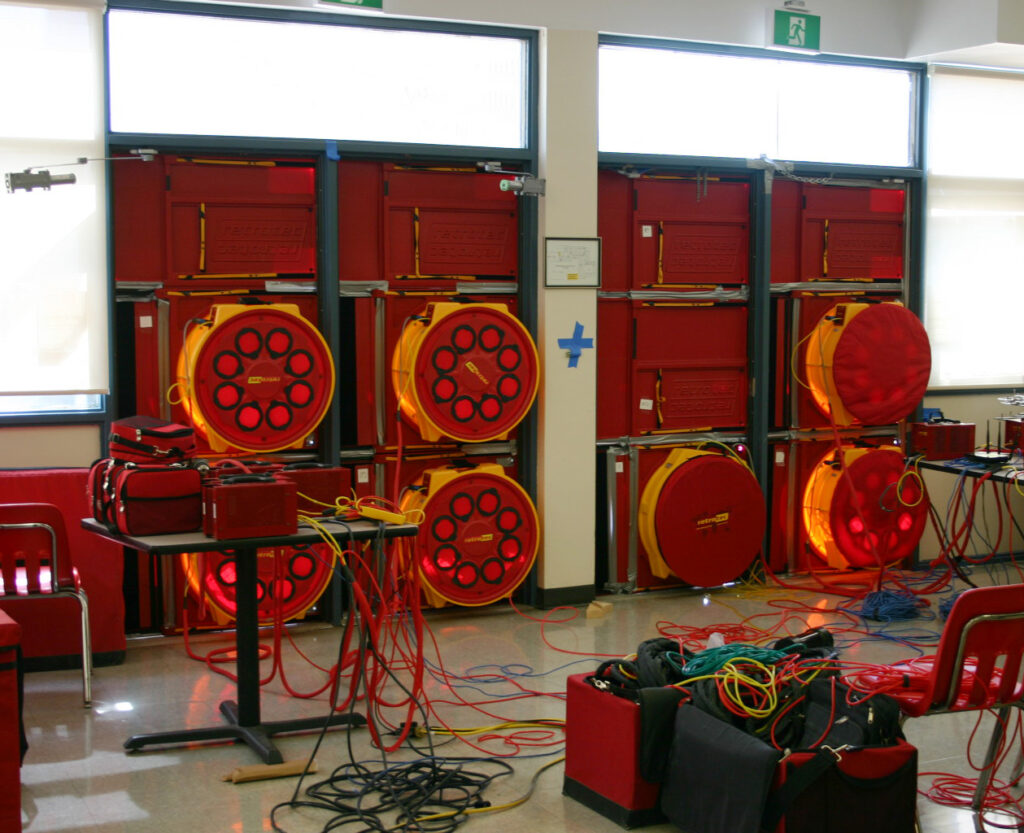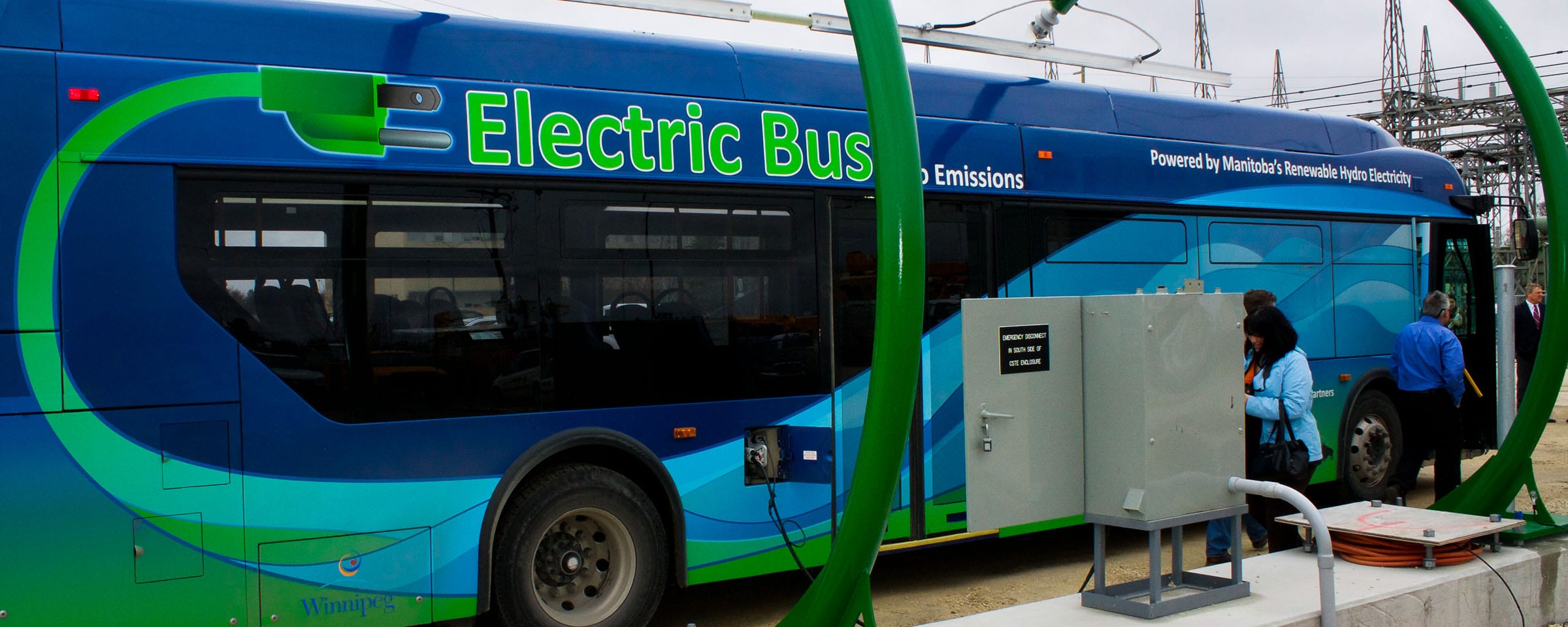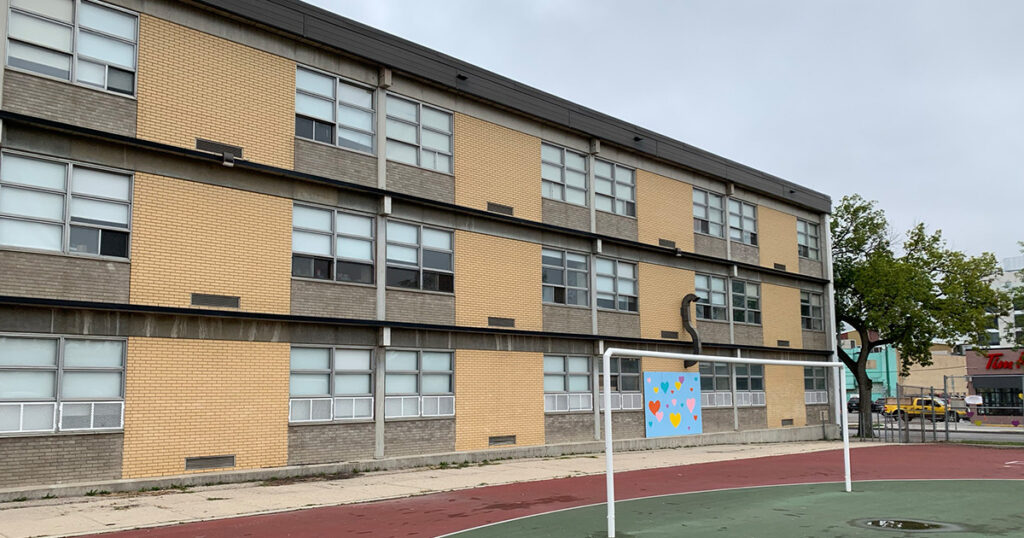Keeping it tight: BETAC is ready to meet the growing need for building air tightness testing
Red River College Polytechnic’s (RRC Polytech) Building Efficiency Technology Access Centre (BETAC) is providing a breath of fresh air these days. Using high-powered fans and specialized equipment, researchers are pressurizing and depressurizing buildings of all sizes to find out where they leak, and help builders, engineers and property owners meet rising standards of energy efficiency.
The value of whole building air tightness tests like these have long been recognized for residential properties. New codes, policies and regulations may soon pump up demand for testing on commercial buildings, too – and so far, BETAC is the only organization with the skills, expertise and equipment to offer them in Manitoba.
“We’re looking forward to playing a greater role helping our community make buildings that are more durable and sustainable to operate, especially as we adapt to a future that places higher premiums on energy efficiency,” says Rob Spewak, BETAC’s business development manager.
Breathing new life into old buildings
The need for a more energy-efficient building stock is especially acute in Winnipeg, which boasts a relatively high proportion of heritage buildings. In September, for instance, BETAC completed an air tightness test at Gordon Bell High School, whose building features walls and mechanical systems are more than 50 years old. The results will provide insights into the most cost-effective measures for reducing energy usage when Gordon Bell undergoes an upcoming renovation.
Chris Buzunis, the Province of Manitoba’s Senior Energy Engineer and project manager for the Gordon Bell retrofit, says BETAC’s pre- and post-renovation air tightness testing has proven valuable on many projects like this.
“It helps identify problem areas to address at the start of a project and has also been a fantastic quality control tool when construction is complete. We have identified many deficiencies that would have otherwise gone unnoticed.”
BETAC will perform a post-renovation test on the school to validate the airtightness improvements and identify any problem areas before the building goes back into service. The goal of the renovation is to reduce energy costs by 50 per cent.
“Gordon Bell isn’t that different from many other schools in our city,” says Spewak, “so what we can measure and learn from here will help us devise guides to help other schools retrofit their building envelopes.”
It isn’t just schools BETAC hopes to help, he adds.
“Our goal in the next few years is to reach out to more private sector partners to show them what is achievable with a tighter building envelope. For one thing, the knowledge we provide leads to better decision-making. It’s a simple equation of investing now to save later.”
Putting your building to the test
Buildings that leak air cost more to heat and maintain. Up to 40 per cent of the cost of heating can come from air leakage, “so it absolutely impacts the bottom line.”
But in cold-climate regions, a leaky building envelope can result in up to six months of structural freezing and thawing, rusting metal, rotting wood, and expanding cracks, compromising the building’s durability as well. Even in warmer climates, leakage allows moisture-laden air to infiltrate or exfiltrate a building envelope. Air tightness can also affect noise levels and the comfort of a building’s occupants.
“Sealing the leaks may save you money and extend your building’s lifespan,” says Spewak. “But first you have to find the leaks, which often turn up in unexpected places you can’t find just by looking.”
BETAC offers a variety of non-destructive tests that target specific building sizes and challenges. The process usually starts with a walkthrough to assess door locations, HVAC intake and exhaust grills, power supply, and whether the building can be isolated.

During the test itself, powerful fans pressurize and depressurize the building, while equipment measures how much air is moved into or out of the building and tracks the corresponding pressure difference across the building enclosure.
The results of the envelop test speak to the general durability of the building, and the continuity and performance of the air barrier. A second set of tests, conducted with all intentional openings left open, measures the energy performance of the building more directly. At this stage, testers may deploy smoke pencils and infrared thermography cameras to identify specific air leakage pathways.
All together, these tests can take anywhere from several hours to three days, depending on the size and complexity of the building. The results deliver quantifiable data that can help owners of existing buildings locate problem areas and determine the costs and benefits of a retrofit. For new buildings, a final air tightness test can complement air leakage testing performed throughout construction.
A track record of success
BETAC has been researching air tightness and methods of testing it since a 2012 pilot project, which means the partners who turn to BETAC for air tightness testing engage some of the province’s leading expertise in the field.
Between 2012 and 2014, with the support of Manitoba Hydro and the Natural Sciences and Engineering Research Council of Canada, a total of 26 commercial buildings in Manitoba were tested for airtightness.
BETAC has also completed air testing research projects for Canada Mortgage and Housing Corporation, and, more recently, for Fort Whyte Alive, to measure the air tightness of an interpretive centre before and after a retrofit.
This same air tightness testing service used at Gordon Bell High School was also recently completed on the BMO Bank of Montreal building in downtown Winnipeg. BETAC plans on performing this testing for Manitou a bi Bii Daziigae (formerly known as the Innovation Centre project) soon.
Spewak says demand for tests like these will only increase as more cities and governments incorporate air tightness and energy efficiency into their building codes and green mandates. In addition to air leak testing, BETAC has committed to ongoing public outreach efforts to share the findings of its research. The results of BETAC’s work will inform the Province of Manitoba’s Green Building Policy and low carbon initiatives.
The Building Efficiency Technology Access Centre (BETAC) supports the building industry by helping clients address the challenges of designing and constructing durable, energy-efficient building envelopes, components and assembly in an environment with extreme conditions. Its core purpose is to support the needs of those involved in the design, construction, renovation, commissioning and maintenance of a building’s envelope.

